Key takeaways:
- Understanding the causes of market downturns is essential for making informed decisions and navigating them effectively.
- Maintaining a long-term perspective, adopting dollar-cost averaging, and diversifying investments can mitigate losses and create opportunities during downturns.
- Emotional resilience and self-care are crucial during market fluctuations, as they help prevent poor decision-making driven by panic.
- Preparation for future downturns involves having a diversified portfolio, a cash reserve, and staying informed to adapt proactively to changes in the market.
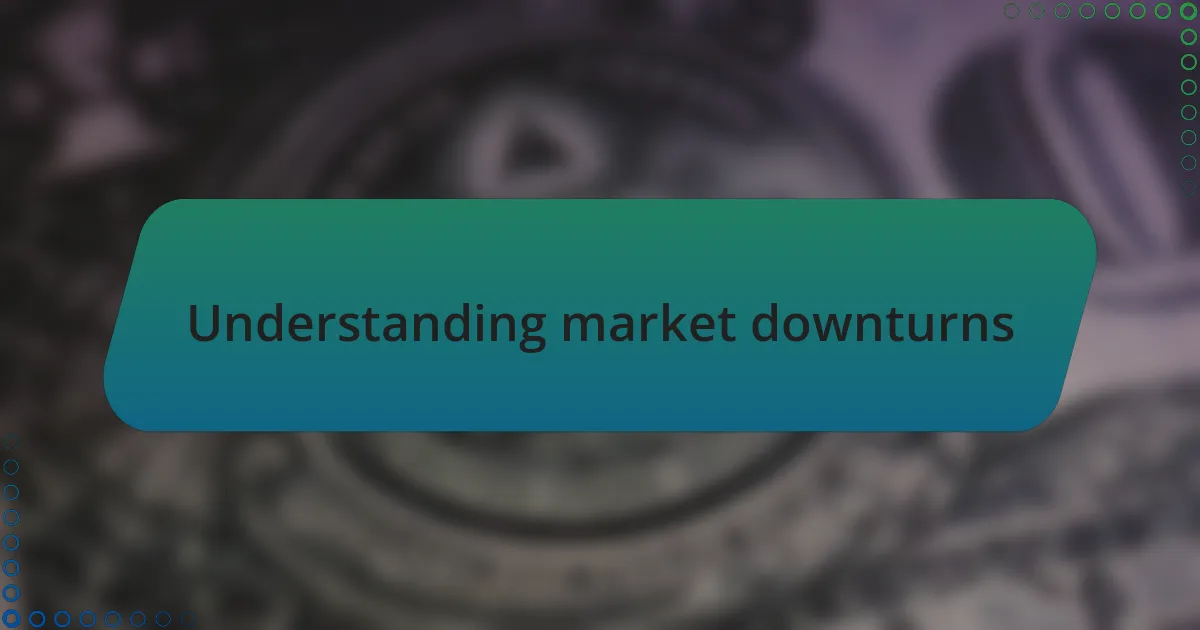
Understanding market downturns
Market downturns can feel overwhelming, often prompting a wave of panic among investors. I remember my own experience during the 2008 financial crisis; the uncertainty was palpable. It left me questioning my investment strategy and whether I had made the right decisions. Have you felt that same fear when the market takes a tumble?
Understanding the underlying causes of market downturns is crucial for navigating them effectively. They can stem from a variety of factors, including economic shifts, political instability, or unexpected global events. Reflecting on the sudden downturn of early 2020, I saw how quickly everything could change, and it made me realize the importance of staying informed and adaptable.
It’s essential to identify not just what triggers a downturn, but also how it can impact your portfolio and investment goals. Through my experiences, I’ve learned that market dips can also present unique opportunities for growth if approached with a clear head and a strategic mindset. Are you ready to rethink your perspective on a downturn?
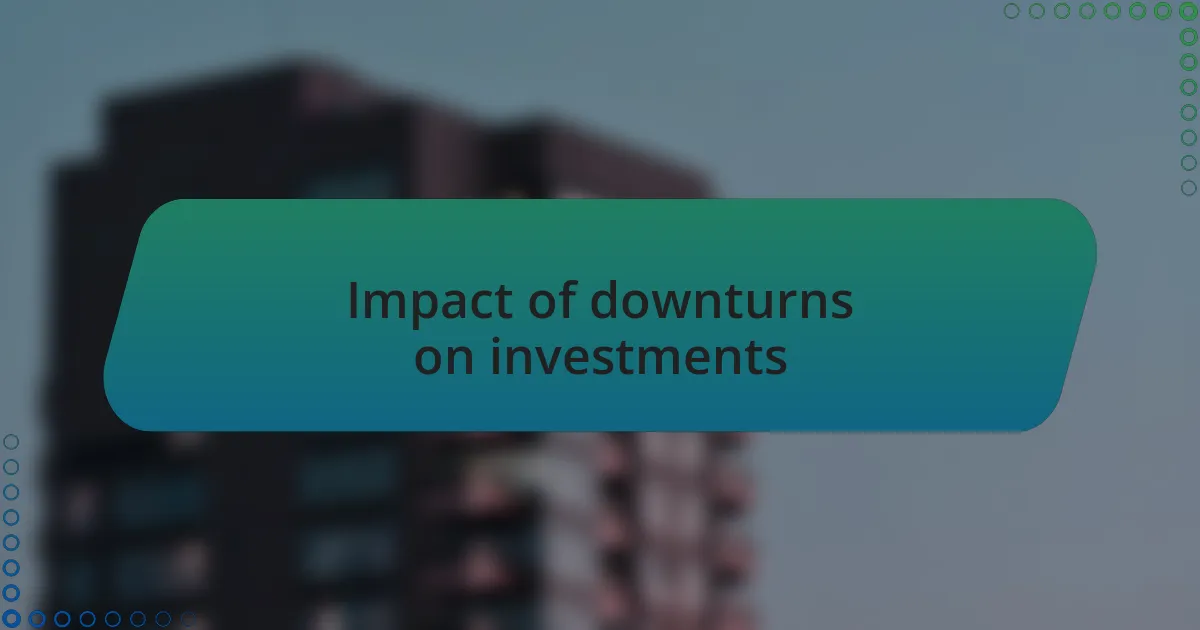
Impact of downturns on investments
Market downturns can dramatically shift the landscape of investments. I recall a particular moment during a downturn when my once-stable portfolio took a significant hit. It felt like watching a slow-motion train wreck. I often wondered how this would impact my long-term goals and if I was too heavily invested in the wrong sectors.
During these times, I’ve learned that emotions can cloud judgment. Panic selling can exacerbate losses rather than mitigate them. I found myself grappling with the urge to liquidate some assets, fearing further declines. But stepping back helped me see the bigger picture: holding on through the downturn could ultimately lead to recovery and growth. Have you ever had to resist the urge to sell low, knowing it might not be the right decision?
It’s also fascinating to observe how downturns can shift investment strategies. For instance, I started reallocating my resources, focusing on undervalued stocks and sectors that showed resilience. This approach not only enhanced my portfolio’s diversity but also reignited my confidence. How do you adjust your strategy when the market dips, and what lessons have you gathered from those experiences?
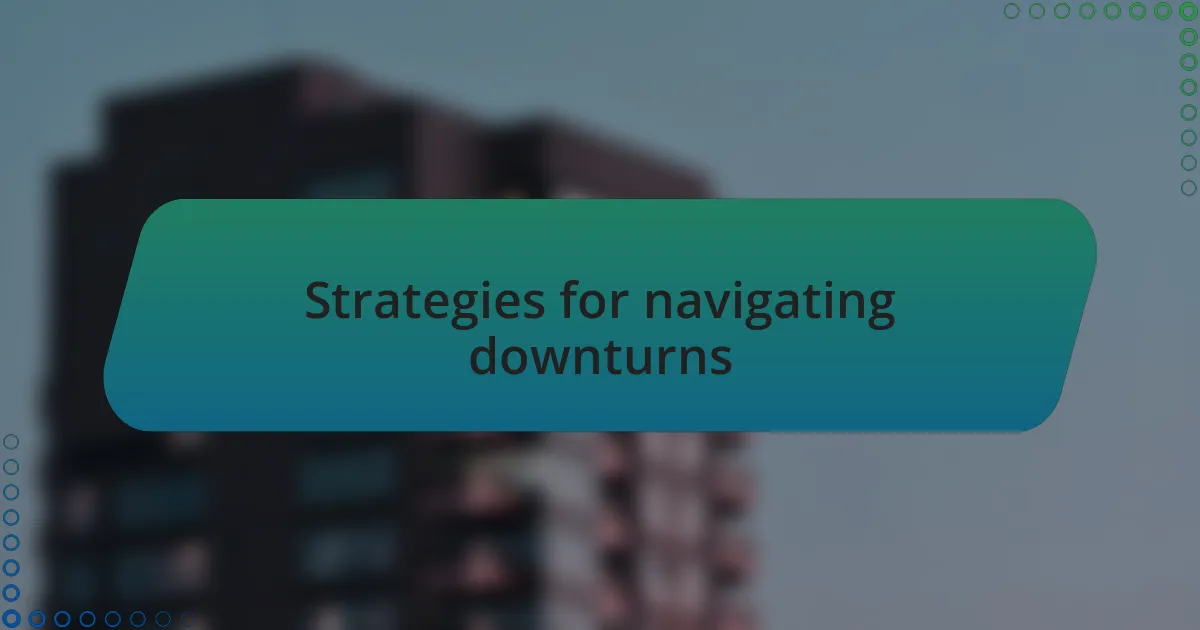
Strategies for navigating downturns
One effective strategy for navigating downturns is to maintain a long-term perspective. I recall a period when the market faced a significant downturn, and I found solace in my original investment thesis. It was so easy to get caught up in the chaos, but reminding myself of my goals and the reasons behind my investments helped me stay calm and avoid knee-jerk reactions. Have you ever found yourself reconnecting with your long-term objectives during turbulent times?
Another approach I’ve adopted is focusing on dollar-cost averaging. During downturns, consistently investing a fixed amount can actually result in purchasing more shares at lower prices. I remember committing to this strategy after witnessing a decline; it felt like turning a negative into a positive. The sense of empowerment this brought me was invigorating. Do you find comfort in creating opportunities during market lows?
Finally, I’ve learned the value of diversifying my portfolio to include defensive sectors such as consumer staples and utilities. When my technology stocks took a nosedive, opposing sectors provided a buffer, softening the impact on my overall portfolio. This experience taught me that while markets will fluctuate, having a strategy in place can help maintain stability. What steps do you take to ensure your portfolio is resilient against downturns?
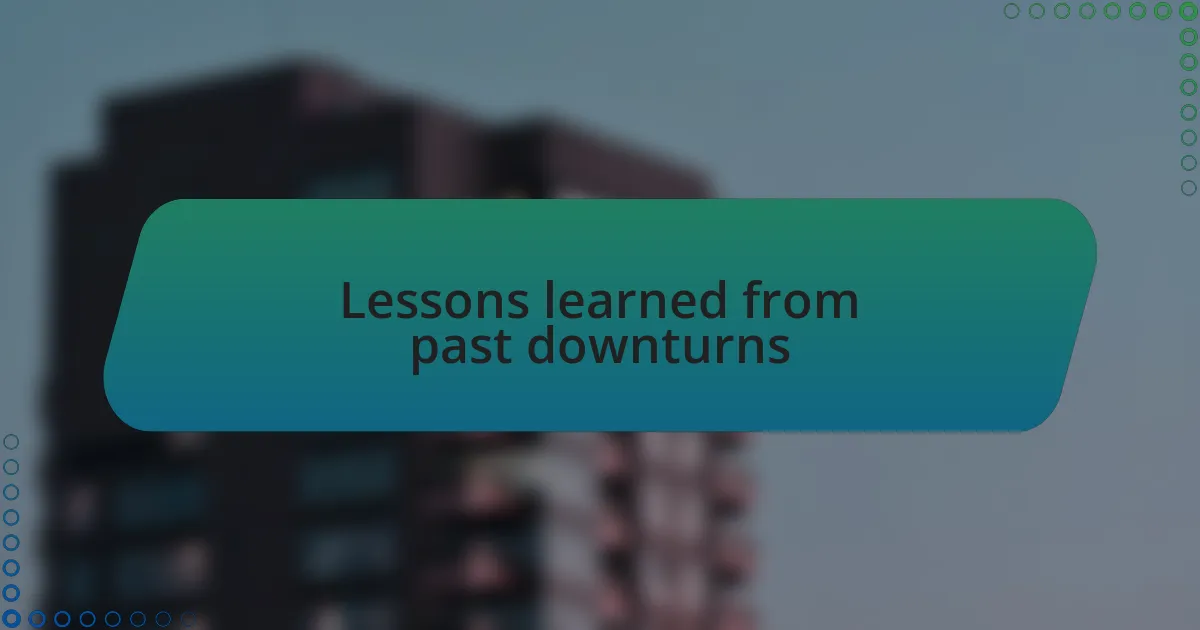
Lessons learned from past downturns
In reflecting on past market downturns, one crucial lesson I’ve learned is the importance of investor psychology. During a previous downturn, I distinctly remember the anxiety that gripped me as I watched my portfolio’s value drop. It reinforced the idea that emotions can cloud judgment, pushing me to dig deeper into the rationale behind my investments and focus on the long-term vision rather than short-term noise. Have you ever analyzed your emotional responses during market fluctuations?
Another insight I’ve gained is the necessity of adaptive strategies. There was a time when rigidly sticking to my original investment plan hindered my ability to capitalize on emerging opportunities. This taught me that flexibility can be an asset; staying open to reallocating resources in response to changing market conditions often leads to more favorable outcomes. Have you ever reconsidered your approach in light of new economic realities?
Lastly, I’ve found that learning from the past is invaluable. After experiencing a sharp decline, I took a step back to evaluate my decisions. This reflective process led me to identify patterns and mistakes, which equipped me with the knowledge to make more informed choices in the future. It’s a reminder that gaining insights from previous downturns can transform what might feel like setbacks into stepping stones for better investing. How do you incorporate lessons learned into your investment strategy?

Personal experiences during downturns
During one significant downturn, I found myself at a crucial crossroads. Watching the market plummet tested my resolve, and I remember grappling with a mix of fear and determination. It was during those uneasy nights that I learned the importance of staying grounded and trusting my research, which empowered me to hold onto my investments despite the chaos. Have you ever felt like your research was the only anchor in a stormy sea?
In another experience, I vividly recall a moment of panic when a sudden downturn led to an avalanche of sell-off news. It felt like everyone around me was hitting the panic button, but instead of joining the fray, I took a step back. That pause was instrumental; it allowed me to assess the broader picture rather than making decisions based on fleeting emotions. Have you found value in taking a breath before acting in volatile times?
Reflecting on downturns, I also came across an incident where I acted too quickly out of frustration. I sold a promising stock that later rebounded stronger than ever, teaching me that knee-jerk reactions can undermine long-term strategies. This taught me that patience is often the more lucrative choice. Have you ever regretted a hastily made decision in the heat of the moment?
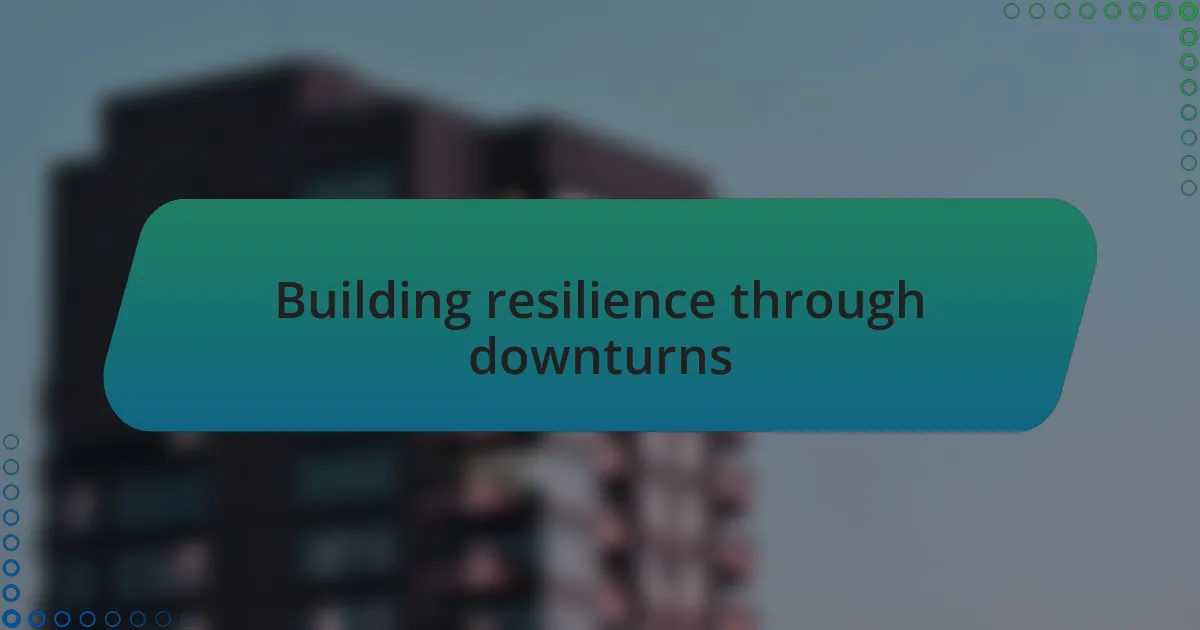
Building resilience through downturns
Building resilience through downturns requires a shift in mindset. I recall a time when I began focusing on my long-term goals rather than the day-to-day market swings. This change in perspective transformed my approach to investing; rather than feeling defeated by short-term losses, I embraced them as opportunities to learn and adapt. How often do we let our immediate circumstances cloud our vision of the future?
I also remember reaching out to mentors during a particularly rough patch. Their insights helped me stay calm and grounded, reinforcing the idea that collaboration can build resilience. It’s fascinating how leaning on others can provide clarity when our personal judgment feels shaky. Have you considered seeking support from experienced voices to help you navigate turbulent times?
Building resilience is not just about making wise decisions; it’s about emotional fortitude. I learned the importance of self-care during downturns, as stress can lead to poor investment choices. Creating a routine that included exercise and meditation allowed me to maintain my composure and remember my investment strategies. Have you thought about how your emotional state affects your financial decisions during market fluctuations?

Actionable tips for future downturns
When preparing for future downturns, it’s essential to maintain a diversified portfolio. I once learned this lesson the hard way during a market drop that hit my tech-heavy investments particularly hard. By balancing my assets across different sectors, I found that some holdings would cushion the blow, allowing me to avoid knee-jerk reactions. Have you thought about how well-balanced your investment strategy is?
Another tactic I recommend is setting aside a cash reserve for turbulent times. I utilized this approach during a recent downturn, which gave me the flexibility to take advantage of discounted assets when fear prevailed. This buffer not only alleviated stress but also allowed me to invest thoughtfully rather than impulsively. Could having liquidity provide you with similar peace of mind?
Lastly, staying informed and adaptable is crucial. I discovered that my most successful investments came from staying ahead of market trends and being open to pivoting my strategies. Complacency can be a risk during stable periods, but when downturns hit, I’ve learned that remaining proactive helps me seize new opportunities. Are you ready to embrace change and look for the silver lining in challenging times?